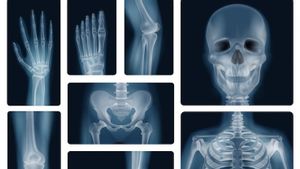YOGYAKARTA Comedian Babe Cabita is reported to have experienced a fairly rare disease. After being sentenced to dengue hemorrhagic fever (DHF) but the fever has not subsided. The father of two children admitted that unlike the symptoms of dengue fever, only the platelets fell, but white blood leukocytes and HB also fell. Further examination was taken from the spinal cord until he was finally sentenced to an anemiaplastically.
Aplastic anemia is a condition that occurs when the body stops producing enough new blood cells. This condition makes the sufferer often exhausted and prone to infection and uncontrolled bleeding. Launching the Mayo Clinic page, Tuesday, September 5, this disease is a rare and serious condition. The reason is, an aplastic anemia can develop at any age and occurs suddenly. Treatment is needed, including taking expert prescription drugs to severe conditions, a spinal cord transplant is needed.
Often aplastic anemia has no symptoms. However, the symptoms can be recognized with frequent signs of fatigue, shortness of breath, fast or irregular heartbeats, pale skin, frequent infections and prolonged bruises, unexplained and easy bruises, bleeding gums, prolonged bleeding due to injuries, skin rashes, dizziness, headaches, and fever.
Because aplastic anemia can be experienced in a short period of time but can develop chronically, it requires proper treatment under medical observation.
This rare disease experienced by camedian Babe Cabita is caused by damage to the stem cells in the spinal cord that produce red blood cells, white blood cells, and platelets. As a result, the bone cord becomes empty or called aplastic or contains only a few blood cells or hypoplastics.
It should be understood, the spinal cord is a red material and has a chewy texture located in the bones in charge of producing blood cells. Most generally, aplastic anemia is caused by the immune system that attacks the spinal cord's parent cells. Other factors that can injure bone cells and affect blood cell production include:
In addition to the six triggers above, there may be unknown factors and doctors cannot identify the causes of aplastic anemia. In addition, children born with fanconi anemia characterized by birth defects, bodies smaller than the average, and body parts less developed, can also experience aplastic anemia.
اقرأ أيضا:
The English, Chinese, Japanese, Arabic, and French versions are automatically generated by the AI. So there may still be inaccuracies in translating, please always see Indonesian as our main language. (system supported by DigitalSiber.id)


















